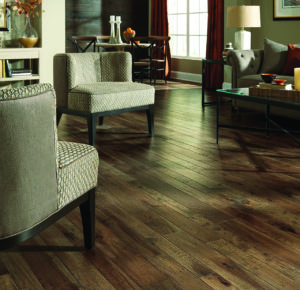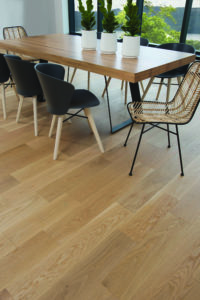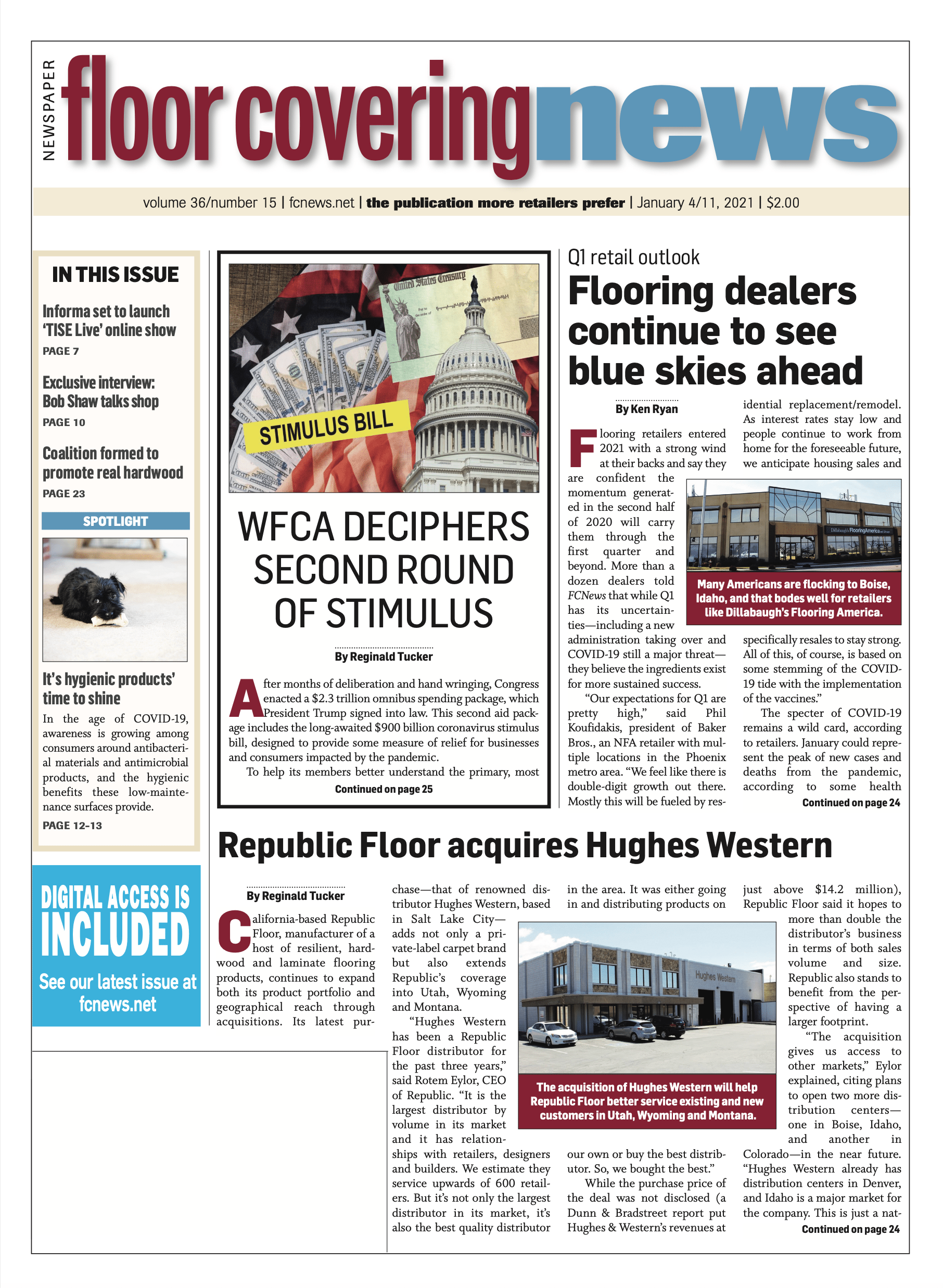By Reginald Tucker

The popularity (and affordability) of laminate flooring posed a threat to the wood flooring sector when that new product category came on to the scene in the U.S. market more than 20 years ago. Over time, while laminate’s share of the overall flooring market ebbed and flowed, wood flooring held its ground.
Other flooring categories sought to cut into wood’s share. Thanks to advancements in printing and screening technologies, for example, ceramic and porcelain products can be made to look like wood. More recently, the wood flooring sector has come under even greater pressure as manufacturers have been agonizingly watching LVT and WPC-type products gradually nip precious market share over the past few years.
While hardwood’s loss of market share in the U.S. has been well documented, the category remains arguably the most aspirational flooring product in the minds of consumers and homeowners. The flood of wood-look-alike products—led by LVT, WPC, SPC and other rigid core options—has created a lot of confusion about what is and what is not a real wood floor. Hence the importance of educating not only the consumer but also retail salespeople about the benefits real wood offers over competing categories. In 2019, the National Wood Flooring Association (NWFA) published a research study on consumers to get their insights and perceptions about wood floors. What it discovered was two-thirds of consumers want wood floors. However, it found many consumers don’t know the difference between wood floors and other products.
“We encourage the entire wood flooring industry to utilize the preference they have with homeowners and to work together so when consumers ask for wood floors, the supply chain is selling real wood instead of a substitute product,” said Michael Martin, president and CEO of NWFA.
In defense of wood, Martin pointed to the product’s pros:
1. Despite the intense competition, it’s still the most aspirational flooring product.
2. Research shows 52% of homes in the U.S. have wood floors somewhere in the house.
3. Nearly two-thirds of consumers agree wood adds the most value to a home.
4. Wood equates to longevity. “The life cycle of a wood floor can easily exceed 100 years,” Martin said.

Some suppliers—including some NWFA members—who are reluctant to cede any more market share to competing categories are taking the “If you can’t beat them, then join them” approach by promoting hybrid products that feature a razor-thin, real-wood veneer atop a synthetic rigid core. The issue with hybrids, hardwood purists say, is not the fact that they are gaining traction in the market. Rather, they say products that fall under this umbrella belong in a category other than wood.
“We don’t consider them hardwood floors or to be in the hardwood segment,” said Brad Williams, vice president of sales and marketing for Boa-Franc, maker of the Mirage brand of wood flooring. “Taking a product that is less than 10% hardwood of the total composition of the product—and being attached to plastics, magnesium or any other non-wood cores—is not a hardwood floor and should not be sold as such by RSAs. This push and strategy is going to affect negatively the environment in the long run, and it is also going to affect very negatively the entire supply chain for the wood sector including loggers, saw mills, manufacturers, etc.”
There’s another issue: Williams argued that RSAs and consumers need to realize hardwood forests have more than doubled in the last 70 years, and the carbon capture is as strong as it has been since the mid 1950’s. He stated that if we don’t have the demand for hardwood and we don’t harvest mature trees from the forest, those trees will start to leach carbon back into the environment, which is not good for the planet.
“This ‘hybrid’ strategy is a double-negative in our minds,” he added. “There is more plastic being produced, which is harmful for the environment and not biodegradable, and it does not last as long as wood for the consumers, so it will require more replacement in a shorter life cycle. At the same time, we are not doing enough selective harvesting in the forests due to lack of demand to be able to keep the carbon capture in those mature trees and allow the growth of new saplings to be able to mature and capture more carbon. It’s a really bad situation and people don’t realize it, or they don’t want to hear about it because they just want to turn a profit. If retailers and consumers don’t realize this soon, it’s going to be problematic for the entire industry, the supply chain as well as the environment.”
All the more reason, real wood proponents say, to make a case for selecting genuine hardwood over competing products by telling wood’s unique story. “We think it’s awesome that companies have been innovating with wood products, and we hope that we never stop trying to find the next great opportunity in wood flooring,” said Wade Bondrowski, director of sales, USA, Mercier Wood Flooring. “But I would caution everyone in their thinking—isn’t wood supposed to be a sustainable, environmentally friendly floor that has the least adverse health effects with a true green footprint? We are finding the real buyer is considering better goods, and they understand the added value to their homes.”
Pierre Thabet, president and CEO of Boa-Franc, agreed. “For consumers who want to add value to their home, hardwood floor remains their preferred choice,” he said. “It’s our responsibility to promote the benefits of hardwood over look-alike products.”
Anecdotally speaking, observers estimate that hybrids currently represent less than 10% of total wood flooring sales—some place that number at 5% or lower.
“We just don’t see it growing,” Bondrowski said of hybrid’s share. “If the consumer is looking for plastic, they go all plastic. However, the real wood buyer doesn’t want a hybrid; she is looking for 100% authentic wood in the upper range right now.”

